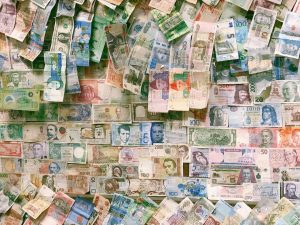Arbitrage trading in forex is a popular trading strategy that involves buying and selling currencies in different markets simultaneously to take advantage of price discrepancies. It is a low-risk, high-reward trading approach that aims to profit from the differences in exchange rates between different currency pairs. In this article, we will discuss the concept of arbitrage trading in forex, how it works, and some important considerations for traders.
Arbitrage trading is based on the principle of exploiting price differences between two or more markets. In the forex market, price discrepancies can arise due to a variety of reasons, including differences in supply and demand, market inefficiencies, or macroeconomic factors. These price differences can be small, but they can add up over time, resulting in significant profits for traders who can identify and take advantage of them.
Arbitrage trading involves buying and selling currencies simultaneously in different markets to take advantage of price discrepancies. For example, let’s assume that the exchange rate between the US dollar and the euro is 1.20 in New York and 1.22 in London. A trader could buy US dollars in New York and sell them in London, making a profit of 0.02 euros per dollar. This may seem like a small profit, but when trading large volumes, the profits can quickly add up.
There are several types of arbitrage trading strategies that traders can use in the forex market, including:
1. Triangular arbitrage: This involves trading three different currency pairs to take advantage of price discrepancies. For example, if the exchange rates between USD/EUR, EUR/GBP, and USD/GBP are not in line with the theoretical relationship (USD/EUR x EUR/GBP = USD/GBP), a trader can make a profit by buying and selling the currencies in the correct sequence.
2. Statistical arbitrage: This involves using statistical models to identify price discrepancies and taking advantage of them. Traders use mathematical algorithms to identify patterns and trends in the market and execute trades based on these patterns.
3. Latency arbitrage: This involves taking advantage of the time lag between different markets to make a profit. For example, if there is a delay in the transmission of market data between two exchanges, a trader can exploit this delay by buying and selling currencies in the faster exchange.
While arbitrage trading can be a lucrative strategy, it is important to note that it is not without risks. One of the primary risks of arbitrage trading is the possibility of slippage, which occurs when the trader is unable to execute the trade at the desired price. This can happen if there is a delay in the transmission of market data or if the market moves quickly, resulting in a price change before the trade is executed.
Another risk of arbitrage trading is the possibility of market manipulation. Traders may attempt to manipulate prices in one market to create a price discrepancy in another market, which can lead to losses for other traders.
In conclusion, arbitrage trading in forex is a popular trading strategy that involves taking advantage of price discrepancies between different markets. Traders can use various types of arbitrage trading strategies to make a profit, including triangular arbitrage, statistical arbitrage, and latency arbitrage. While arbitrage trading can be profitable, it is important for traders to understand the risks involved and to have a solid understanding of the markets they are trading in.





